Being a brick-laying mason or a supervisor is a job that needs wisdom of alignment and orientation. You ought to have knowledge of different types of brick bonds. We also refer brick bonds as brick bonding patterns.
Out there are some basic bonds and therefrom are some derived ones that are carved out.
So; in this read, I would try to start from basic concept of brick positioning and from there would lead you to our core topic of types of brick bonds or brick bond patterns.

The integrity, interlocking and strength of the wall is by and large reliant on how effective type of brick bond is?
By word bond we refer to the arrangement of bricks in a course.
How a good type of brick bond would look alike?
A good bond can be the one that ensures optimum interlocking, avoids continuity of vertical joints throughout the height of wall and at the same time looks good; I mean aesthetically. The following explained parameters would prevail in a wall masonry with good arrangement of bricks. These are also the purpose of brick bonding.
- For effective distribution of load and at the same time for avoiding the uplift soaking of seepage water; the vertical joint must be discontinued after each course of bricks. This breakage must be on the face as well as in the matrix of the wall. See here, different properties of bricks.
- The bricks must get interlocked thereby providing strength in lateral and longitudinal direction.
- Aesthetically the bond arrangement must have a pleasing appearance.
- The bond should allow the use of more than one mason at a time so as to quickly complete the job.
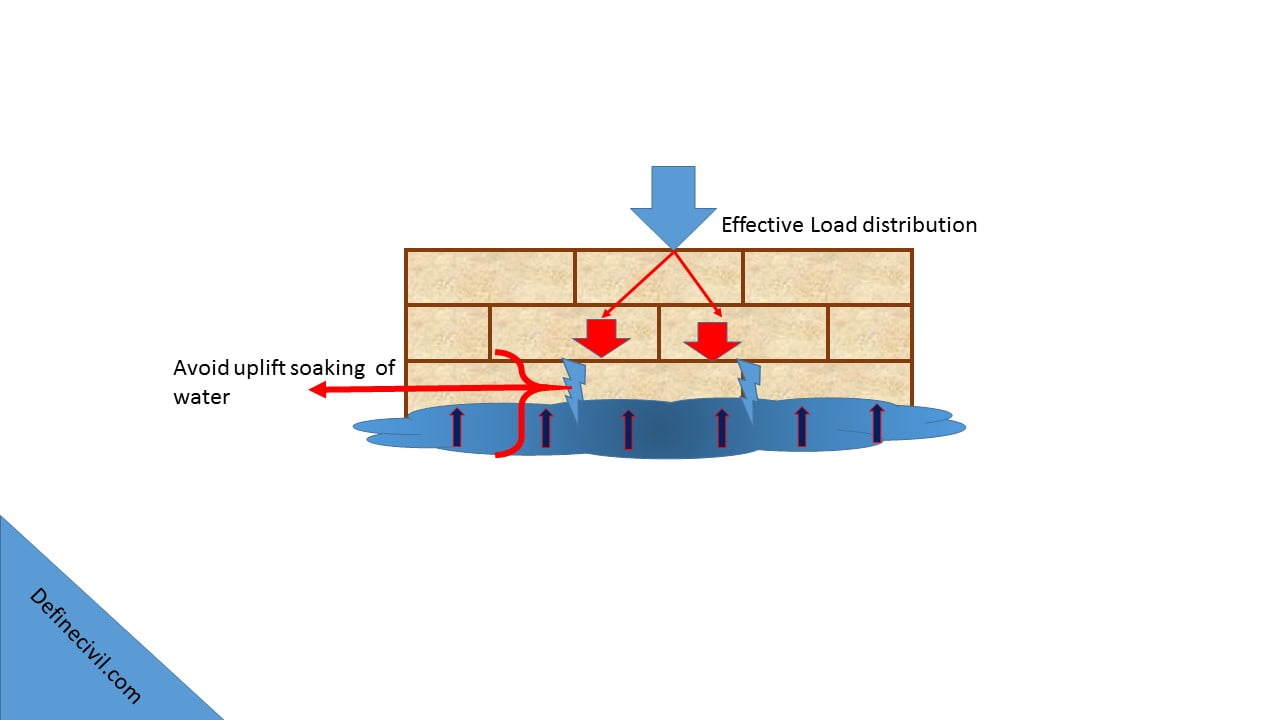
Brick Placing Basics
So here is the trick;
The general dimension of the brick is considered as 9” x 4 ½ “ and 3” (length x width x thickness).
If the brick is laid in a course in a way that its length is parallel to that of the wall the brick position is said as a stretcher. But if 4 ½ “ x 3” is shown on the face of the wall this position is termed as header. Both of these positions are when the brick is laid in 4” x 9” face. In such cases the thickness of a brick wall course would be 3”.
If the bricks are laid on the face of 9” x 3” such that 4” is the height of the course than for such stand the bricks are called upon as shiner and in same position if the 3” x 4” face is facing the wall it is called row lock.
All are explained in pic below.

Now that you are able to identify the position and faces of bricks; so now let’s move on to our core topic i.e. types of brick bonds.
Types of Brick Bonds
There are only three basic types of brick bonds and the trick is that all other are their spinoffs.
So I would be explaining following type of brick bonds
- English Bond
- Flemish Bond
- Header Bond
- Stretcher Bond
- Garden Wall Bond
- Raking Bond
- Hoop Iron Bond
- Raking Bond
-
English Bond
The English bond brick work is the type of brick bond in which the bricks are laid as stretcher and header in alternate courses. See here. The English brick bond has one course of stretchers and above that a course of headers. In the header course just before the quoin header, a quoin closer is placed and rest of the bricks are laid as headers.
So thanks to this arrangement, above the joint of two header bricks, there would be a stretcher brick in the center which would ensure discontinuity of vertical joints.
If the wall thickness is like 9” or 18” or 27” i.e. even multiple of half brick; for such cases the same course will show headers or stretcher on face or on back.
For walls with thickness like 13 ½ “ or 22 ½” i.e. odd multiples of half bricks than opposite shape of bricks would be there.
The word quoin is generally used for bricks that are at the corner of a wall. If the brick is cut at the center along its length making it half piece such a brick is called a queen closer.
Note: No brick bats are allowed in the English Bond.
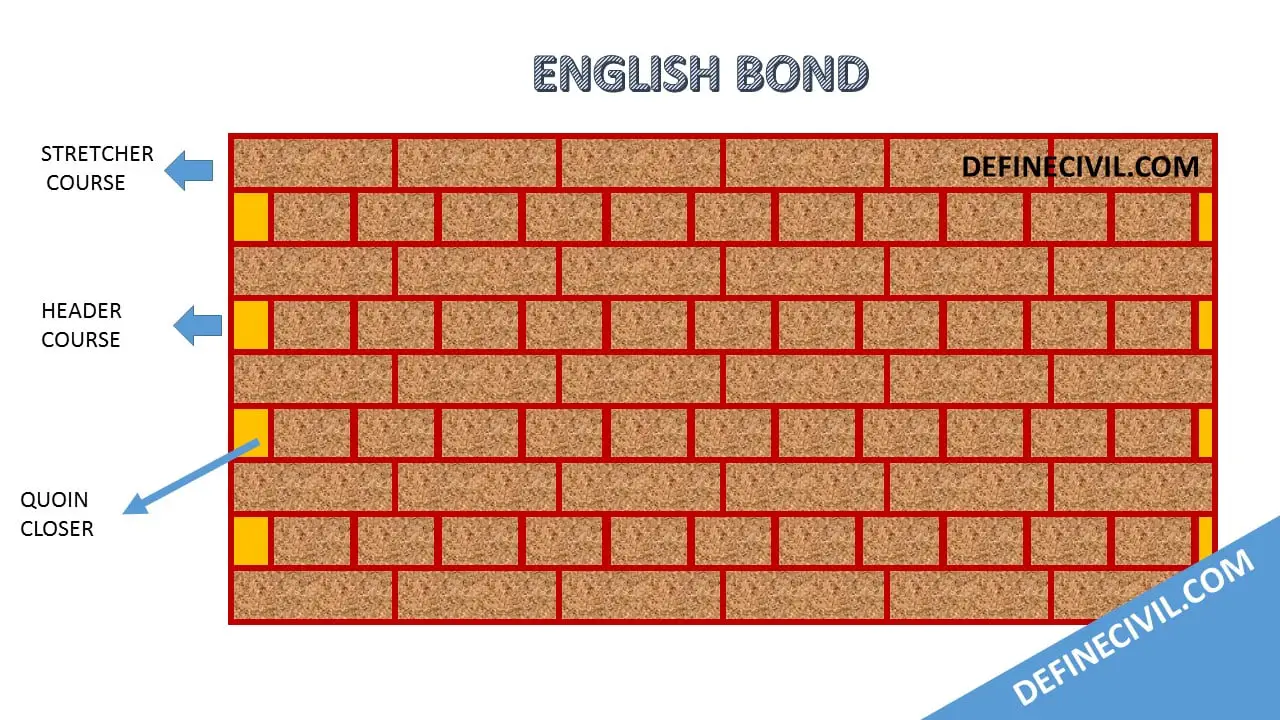
-
Flemish Bond
In this type of brick bond, headers and stretchers are placed alternatively in the same course.
After alternate course a queen closer is placed just next to quoin header and such arrangement would allow each header to lie centrally over every stretcher of underlying course. Here’s an amazing video explanation.
Thereby discontinuing the vertical joints. Flemish bond is aesthetically very amazing to look. Brick bats are allowed to be used in walls having thickness equal to an odd multiple of half brick.
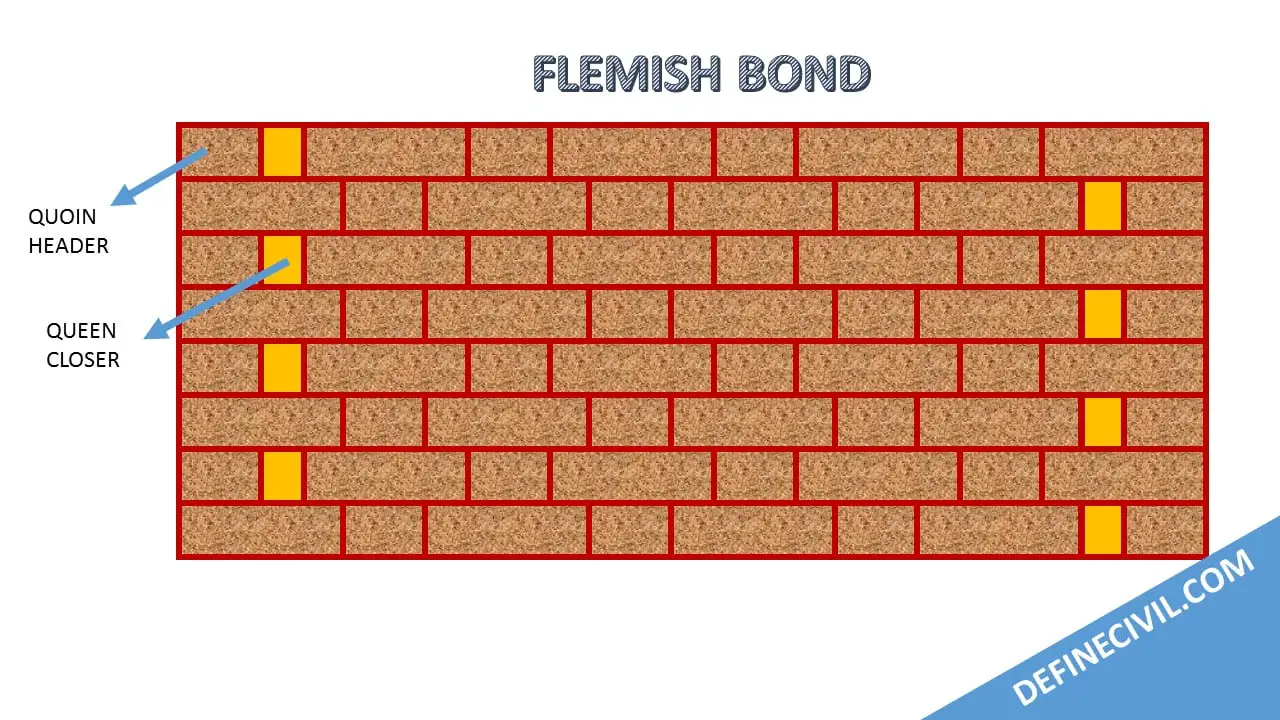
-
Header Bond
If you are seeing only header bricks facing you than such a brick bond is known as a header bond. Header bonds are used to render brickwork of 9” thickness or the width of the brick used around 18 cm. These header bond brickwork is very efficient in case of wall curving in plan. In order to discontinue the vertical joints, an overlap of half the brick is ensured. To achieve that, three quarter brick bats are placed in alternate direction at the quoins of each course. Header bond is sometimes also referred as heading bond.
Read this amazing article explaining all the construction tools required for laying the brick work in different type of brick bonds. Construction Tools and Their Uses Complete LIST [50+]
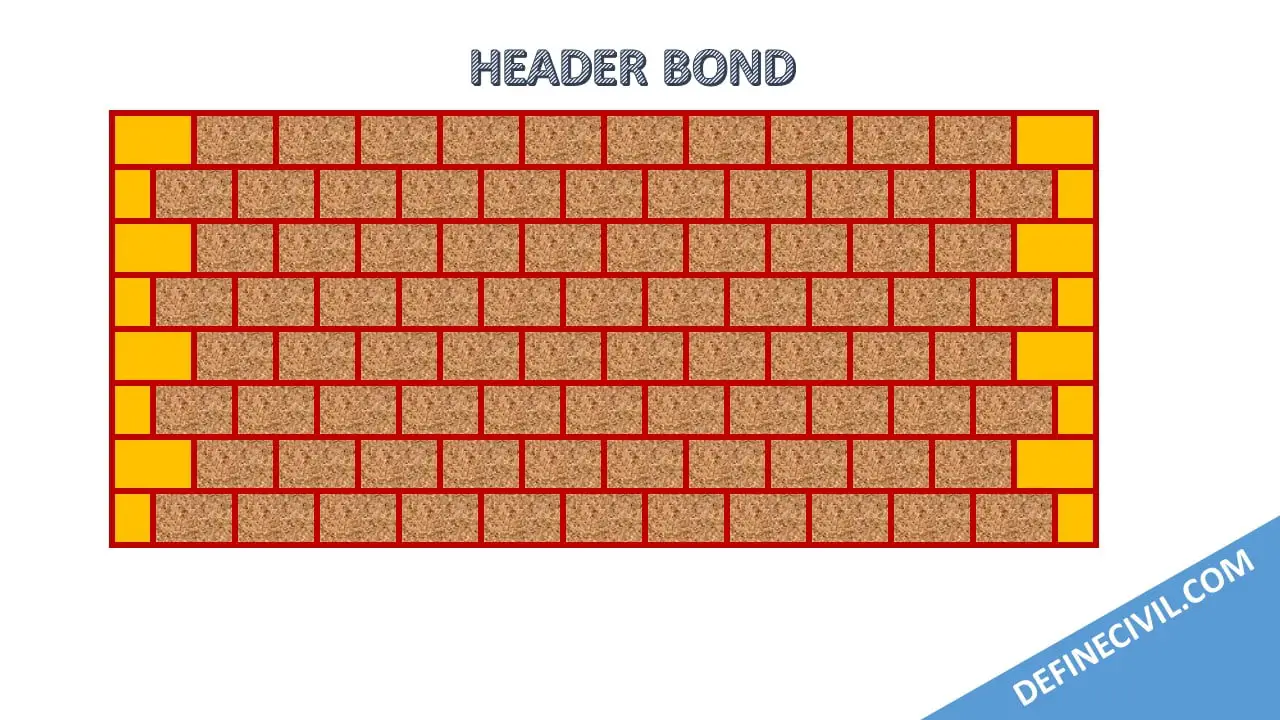
-
Stretcher Bond
Unlike Header Bond, in stretcher bond the width of wall achieved is 4.5” or the thickness of the brick. The walls laid in stretcher bond is mostly used to render partition walls like in washrooms or public toilets. It is understood that stretcher bond wall would be non-load bearing wall.
Stretcher bond brick work is used as boundary walls. But in case of greater height and length of brick work, it is mandatory to support the brick work with additional intermittent columns or counterforts.
The brickwork in stretcher bonds are most common in case of boundary wall of gardens and lawns.
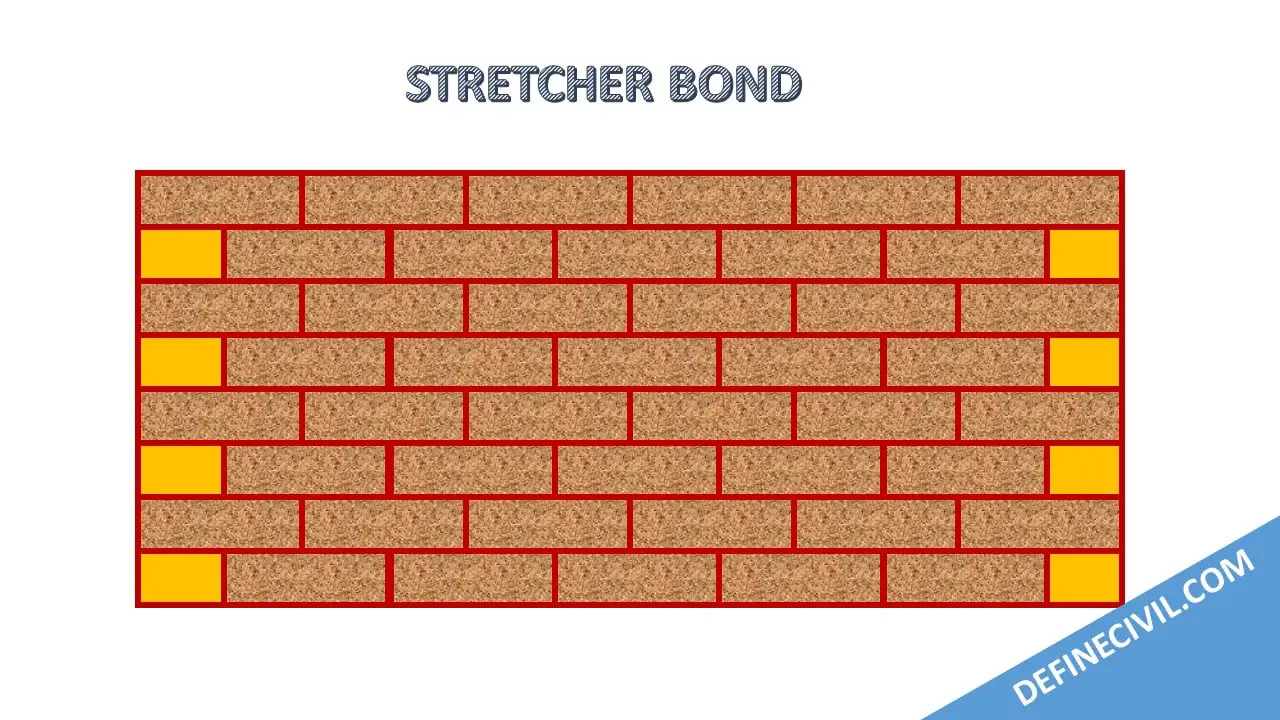
-
Garden Wall Bond
Garden wall bond is a wall built with 1 brick thick size and having fair finish on both the sides. The garden wall bond can either be done in English garden wall bond or Flemish garden wall bond. As both the face have to fair so selection of brick must be done very carefully and in order to help mason the combination of header and stretchers are made.
In English garden wall bond, after three consecutive stretcher courses a header course is introduced while in Flemish garden wall bond after two consecutive stretchers in a course, a header is placed.
The top of garden wall bond is finished by using special coping brick.
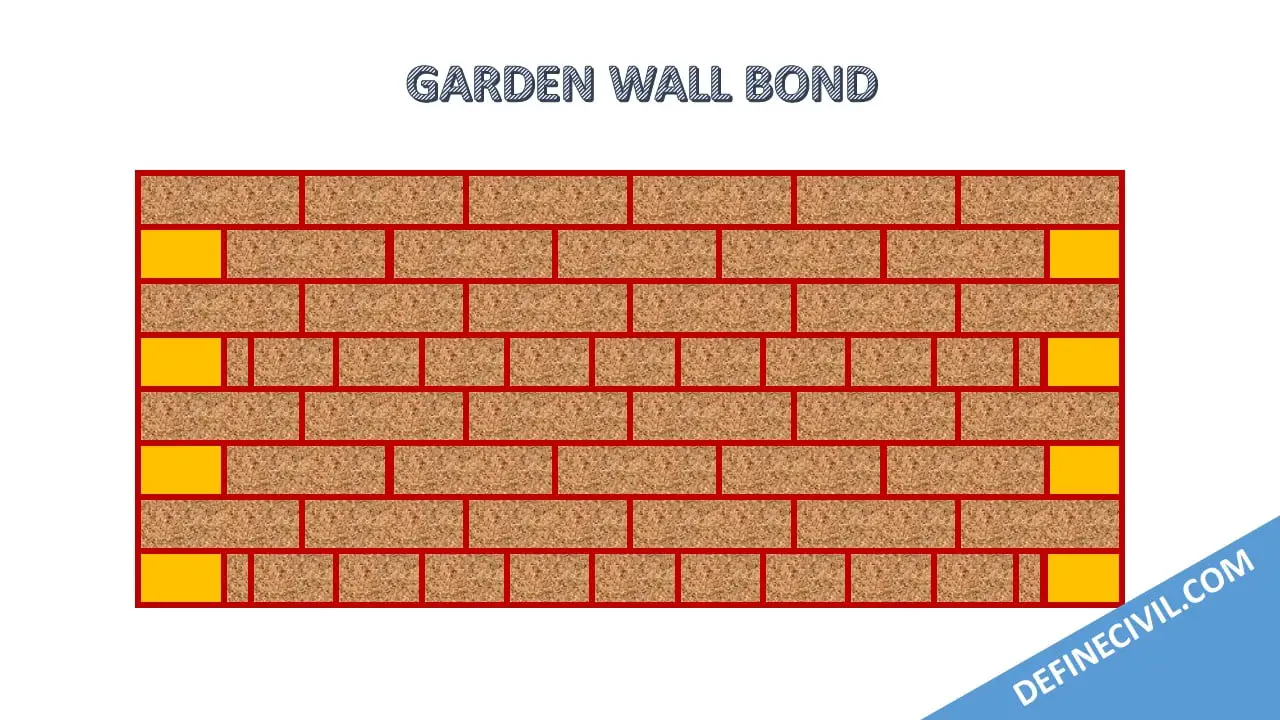
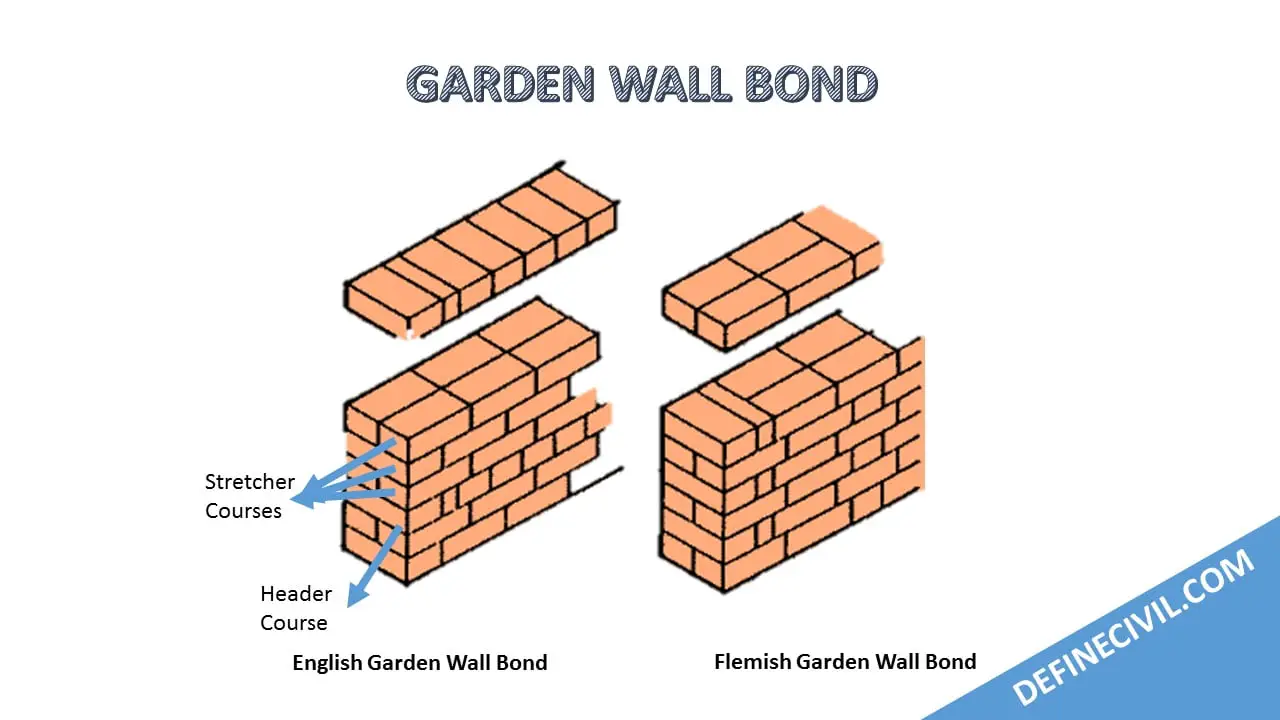
-
Raking Bond
Raking bond is very rarely used only in case of thicker walls. In this type of bond, the bricks are placed inclined to the face of the wall at a direction. On the external faces of the wall, stretcher courses or stretcher bond is placed.
In Raking Bond, it must be ensured that in each courses the direction of raking or inclination must be in opposite to each other. There are two common types of raking bond.
- Diagonal Bonds
- Zig-Zag Bonds
In diagonal bond brickwork, bricks are placed inclined to one another in one direction only. The angle of inclination should be selected such that minimum cutting of bricks would be involved. The diagonal bonds are only recommended for wall which thickness of 2 or 4 brick size.
In zig-zag bond, the bricks are laid in zig-zag manner and is mostly used in brick paved floorings. This zig-zag bond is also sometimes referred as herring bone bond. In this the bricks are laid on the slant to form the shape of a herringbone i.e. the diagonal courses are laid at right angles to each other at the center of the wall.
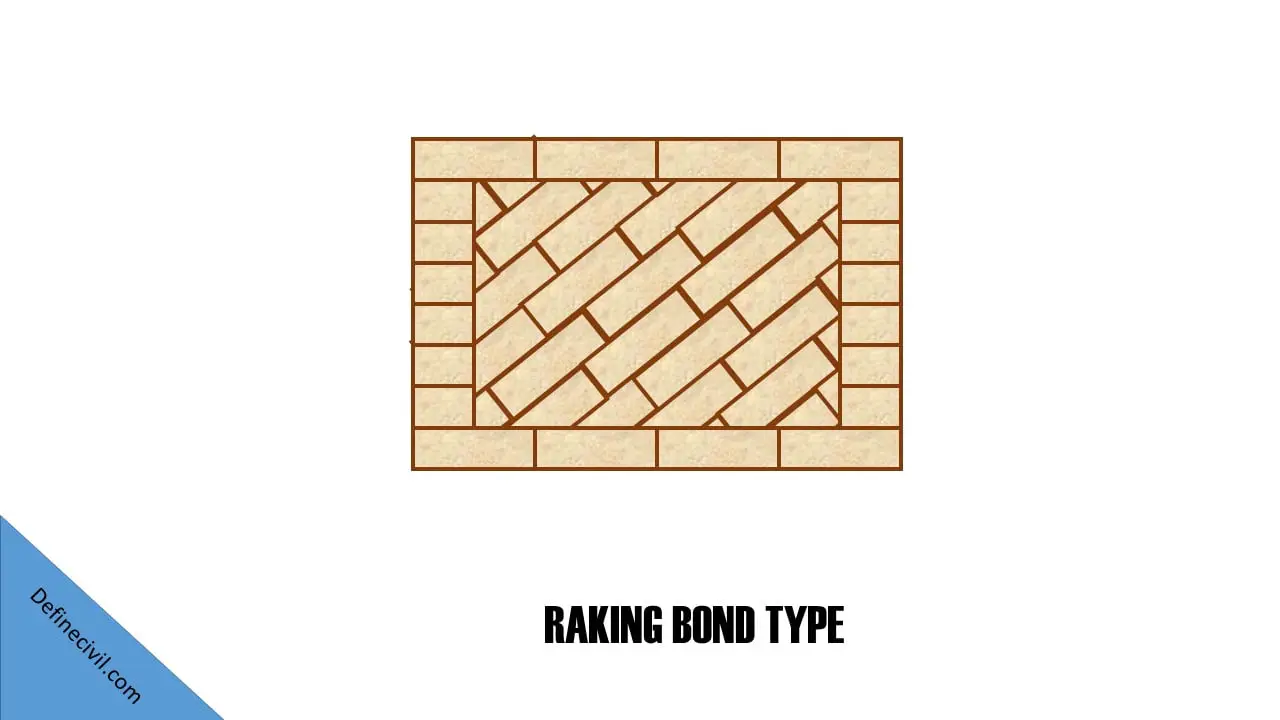
-
Hoop Iron Bond
In case of the hoop iron bond, after every fourth or fifth course of masonry, reinforcement in the form of longitudinal ties is provided for additional strength of the wall, is called “Hoop Iron Bond”. This bond is provided for constructing 4 ½ in thick partition walls.
-
Monk Bond
Monk bond is a type of Flemish bond in which two stretchers between the headers in each courses are provided. The headers are centered over the joint between the two stretchers in the course below.


















